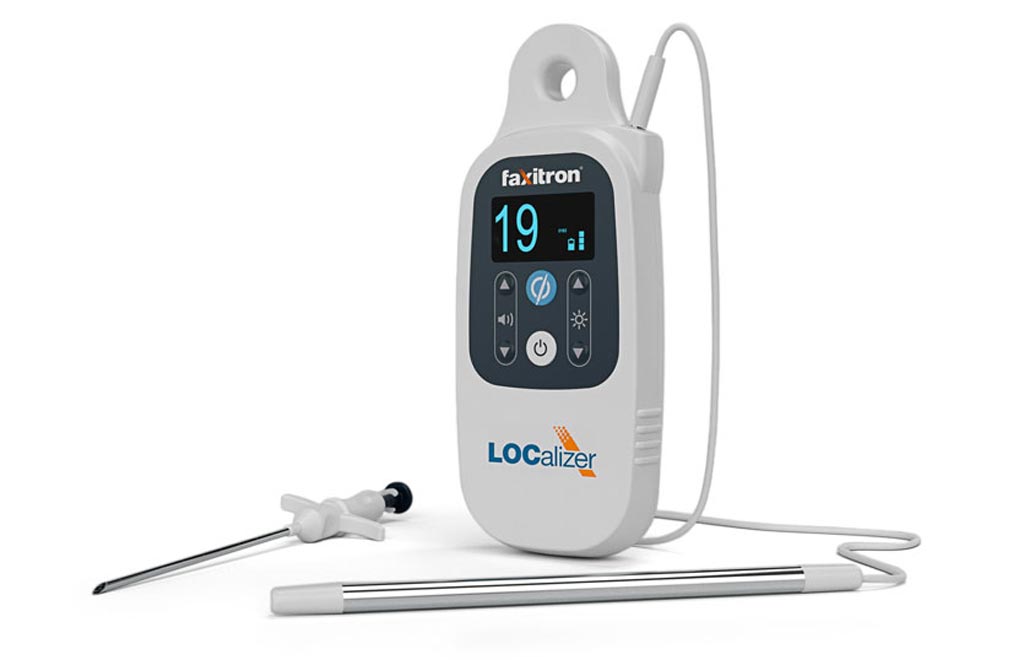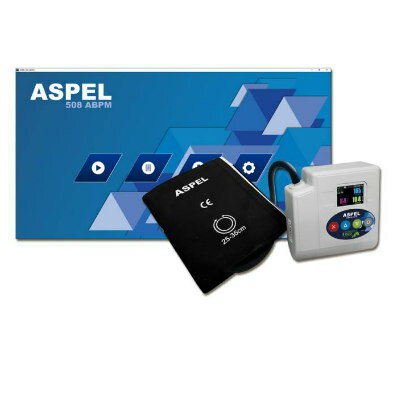RFID System Helps Localize Breast Lesions
By HospiMedica International staff writers
Posted on 23 May 2017
A novel wireless radio frequency identification (RFID) system offers radiation-free breast lesion localization, resulting in better outcomes for patients.Posted on 23 May 2017
The LOCalizer RFID breast lesion localization system includes a miniature non-radioactive RFID tag designed to be implanted in the lesion up to 30 days before surgery, a RFID tag applicator, a handheld reader, and a sterile probe. The mobile, handheld reader contains an integrated loop probe that can be used directly on the skin to determine the location and distance to the lesion and plan the surgical path with a resolution of millimeters. During resection, a single-use, pencil-sized surgical probe can be used to help guide the surgeon directly to the lesion, using audio tone guidance.

Image: The LOCalizer RFID breast lesion localization system (Photo courtesy of Faxitron Bioptics).
Each tag has a unique identification number and is encased in a proprietary, anti-migratory sheath, allowing for better identification of the RFID tag and keeping it in its intended position. The tag is clearly visible on ultrasound, X-ray, and magnetic resonance imaging (MRI), allowing for flexible placement with multiple imaging modalities. The LOCalizer RFID breast lesion localization system is a product of Faxitron Bioptics, and has been approved by the U.S. Food and Drug Administration (FDA).
“As the industry gets better at detecting smaller breast lesions, we must establish a new gold standard for breast lesion localization,” said Donogh O’Driscoll, CFO and COO of Faxitron. “LOCalizer could be the breakthrough needed to make lumpectomies and breast biopsies safer, more efficient, and a better experience for both providers and patients. For more than half a century, our dedication to advancing breast health has been unwavering, and we’re honored to once again pave the way for a higher standard of care.”
“The most exciting aspect of the LOCalizer technology is being able to accurately measure the distance to the target lesion, something we haven’t been able to do with other localization methods,” said Christine Dauphine, MD, of Harbor-UCLA Medical Center (Torrance, CA, USA). “Our team was able to experience the LOCalizer system first-hand in the operating room, and we were thrilled by the prospect of providing patients with a localization method that, by design, could avoid the anxiety of having additional procedures on the day of surgery.”
Traditional methods for marking non-palpable breast lesions prior to surgery require wire localization or radioactive seeds inserted by a radiologist in a separate procedure. The localization wires protrude from the patient’s breast, restricting the patient to the hospital environment. In addition, the protruding guide wires risk movement prior to surgery, requiring follow-up surgery in up to 55% of lumpectomy procedures.














